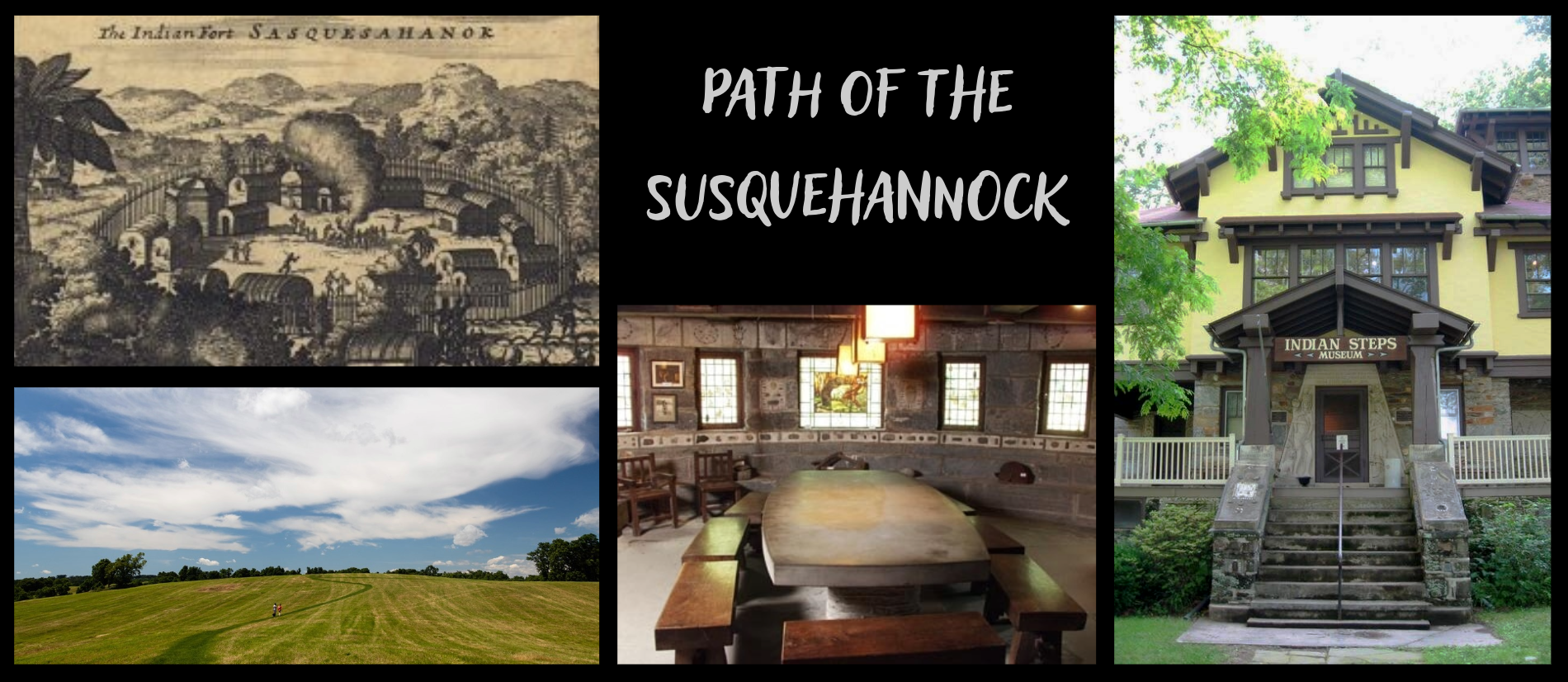
Spend the day along the Susquehanna River exploring three historical sites. Our first stop, the Indian Steps Museum, occupies land where over 10,000 years ago early people carved steps in the river bank to fish for shad. The area was a popular destination for early settlers to collect items such as arrows and spearheads made by those original inhabitants, the Algonquians, and later by the Susquehannocks, and the last tribe there, the Shawnee, who were forced to leave by white colonists in 1765.
Indian Steps Cabin was built in 1912 by John Edward Vandersloot, a York, PA, attorney, with a passion for Native American culture. The Indian Steps Museum has operated as a public museum since the 1940s. Indian Steps is currently owned by the Conservation Society of York County. The Indian Steps Cabin was entered into the National Register of Historic Places in 1990. The Conservation Society of York County does not receive state or federal funding to operate the Museum. It continues to accept donations and fees for tours, programs, and educational opportunities. Every year in June, the Museum hosts a pow-wow with Native vendors, dancers, and musicians. The research curator, Debbie Saylor focuses her efforts on teaching artifact collectors how to properly identify, document, and share information; inspiring appreciation and proper preservation of the material possessions of past peoples; and encouraging education about and advocacy for Native people today.
After we tour the Indian Steps Museum, we’ll enjoy the day with a picnic lunch under the pavilion on site. Moving onto the afternoon portion of our trip, we’ll drive ourselves to The Zimmerman Center for Heritage, managed by the National Park Service. Our tour will focus on the Susquehannock Gallery and include the history of the home, originally named Pleasant Garden by Thomas Cresap, who was sent there in 1730 to collect taxes for Maryland. The actual construction date of the house is unknown but is thought to be around 1740. It is listed on the National Register of Historic Places.
This is also the beginning of the Captain John Smith Chesapeake National Historic Trail, America’s first water-based National Historic Trail. The 3,000-mile-long trail highlights the natural history and 17th-century American Indian societies, along with Captain Smith’s voyages here from 1607-09. The Susquehannock who lived here at the time of Smith’s explorations of the Chesapeake Bay traveled to meet with him near the mouth of the Susquehanna in Maryland in 1608.
A one-mile, one-hour guided hike into Native Lands County Park will finish up our day. The 160-acre park preserves the site of a Susquehannock settlement, occupied from 1676 to 1680. The town was home to 3,000 people. Long after the Susquehannock departed the site, between 1824 and 1879, the Dritt family were buried here in a family plot. Wide, grass walking trails with a scenic overlook of the Susquehannock River will lead us to the archeological site and cemetery. Native Lands Park is also listed in the National Register of Historic Places.